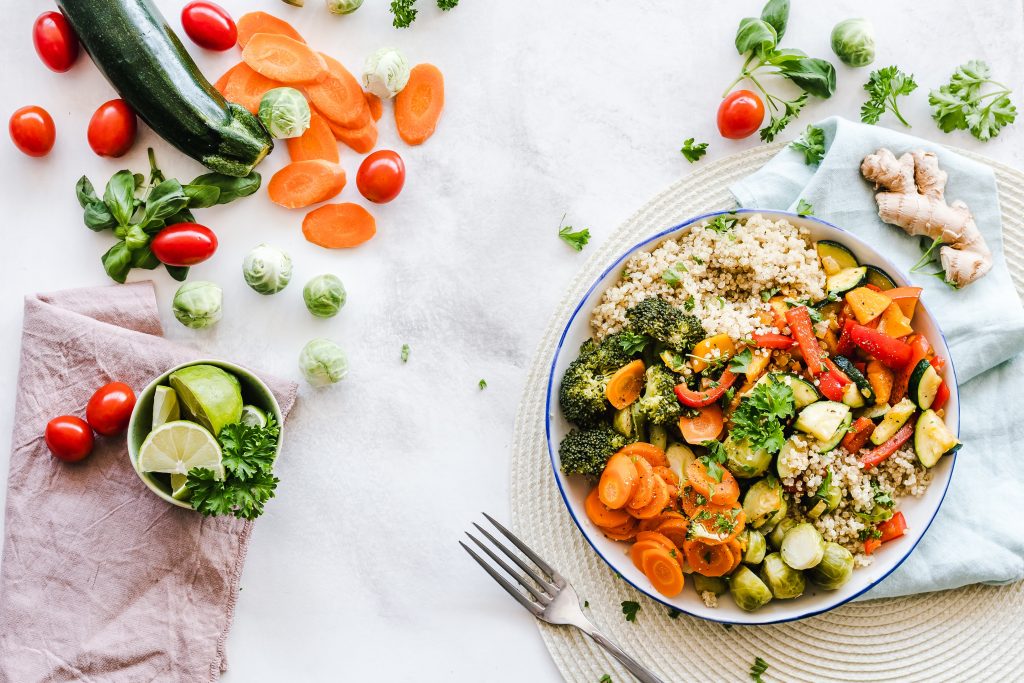Cycling to lose weight – how to lose weight cycling
- Michael
- Last Updated August 27, 2025
We are a reader supported site. We earn commissions when you buy through links on our site. Learn more.
A few years back, I felt unhealthy. I was in the worst shape of my life, and I knew I had to lose some weight to get back to a state of normalcy. After some trial and error, I discovered cycling to lose weight as a fun and convenient way to become healthy again. While I always enjoyed biking, I learned some tips to maximize fat burn and improve my physique.
How to Lose Weight Cycling
Many individuals turn to exercise to lose weight. Aerobic exercise helps burn many calories while reducing your risk of obesity, diabetes, heart disease, and depression. When coupled with a caloric deficit, you can expect to lose fat as you have reduced your energy intake and increased the expenditure.
One common form of aerobic exercise is cycling. Cycling is a low-impact option, especially compared to activities like running, jogging, and plyometrics. Low-impact exercises are necessary for those with weak joints, and you can burn just as many calories if appropriately performed.
Need for Speed
While cycling is an excellent workout for weight loss, pedaling at a leisurely pace will not burn many calories. By riding faster and at varying inclines, you can expend more energy than you would by pedaling slowly. An intense bike ride will burn more calories in a shorter period, leading to quicker weight loss.
The number of calories burned during cycling depends on many factors, including your current weight, heart rate, hormones, and musculature. However, with steady cycling, you can expect to burn upwards of 300 calories per hour. More intense cycling, like spin classes or mountain biking, can result in even more calories burned.
Try High-Intensity Interval Training
High-intensity interval training (HIIT) can help you burn fat while retaining your muscle mass. It takes less time for the workout and burns more calories later. Low-intensity steady-state cardio (LISS) takes more time to burn the same number of calories and may result in muscle loss. However, it improves your cardiovascular health, has a faster recovery time, and will still help you lose weight.
HIIT has you vary between short bouts of intense exercise coupled with short periods of recovery. A cycling HIIT workout could include cycling as fast as possible on an incline for 45 seconds, followed by two minutes of slow and steady biking on a lower slope or flat surface. You switch between the two intervals for 20 to 30 minutes.
A significant benefit of HIIT is that you burn more calories quickly, and you keep burning calories once your workout has finished. It also reduces body fat rather than body mass so that you can maintain your musculature.
Push Your Limits

When you start feeling tired, try to push yourself a little further. Chances are, you still have some strength in you to improve your cardiovascular endurance. Endurance training can help you lose weight as long as you don’t eat the calories you burned.
It’s best to start slow when beginning endurance training. Cycling at a steady pace for 15 minutes and adding a few minutes each session will help you build your stamina.
According to the American physical activity guidelines, you should aim for 150 to 300 minutes of moderate-intensity or 75 to 150 minutes of vigorous physical activity each week. Building endurance with cycling can promote healthy aging and reduce mortality in addition to weight loss.
Engage in Cross-Training
While exclusively biking will do wonders for your health, you can maximize the benefits by cross-training. Alternating activities will push other body parts and improve your performance in cycling. Training your strength and flexibility can aid your overall physical health, reduce your risk of injury, and even increase fat loss.
Splitting your training may help with weight loss. Cycling three days a week and doing Pilates two days a week can give your body a physical challenge. Cross-training is essential if you feel trapped in a rut and have plateaued in your weight loss attempts. Building muscle mass will increase the number of calories burned at rest.
How to Start Losing Weight
Before you begin cycling to lose weight, try to set a realistic goal for yourself. You can select a target weight within the healthy BMI range for your height to determine your ideal weight. Keep in mind that the BMI system is outdated and that weight does not always reflect your health. Nevertheless, you can base your goals on this scale.
Better yet, you could choose a body fat percentage goal. The most accurate way to measure body fat is with a skinfold caliper, but you can use a scale with bioimpedance for a general idea.
The ideal body fat for women depends on their goals and age. As you get older, you can remain healthy at a higher body fat percentage. The general breakdowns from the American Council of Exercise are as follows:
- Essential fat: 10% to 13%
- Athletes: 14% to 20%
- Fitness: 21% to 24%
- Acceptable: 25% to 31%
- Obesity: >32%
Men typically have less body fat and more lean tissue than women because women need more fat for reproduction purposes.
- Essential fat: 2% to 5%
- Athletes: 6% to 13%
- Fitness: 14% to 17%
- Acceptable: 18% to 24%
- Obesity: >25%
Once you have selected a realistic goal for yourself, work towards a caloric deficit.
Make It a Lifestyle Change

Think of your weight loss journey as a lifestyle change rather than a quick fix. Regularly engaging in physical activity like cycling, eating a low-calorie diet, regularly eating breakfast, monitoring your weight, and maintaining your bike riding routine will help you lose weight permanently and not gain it back.
Studies show that taking it slow and steady will lead to long-term weight reduction if you want to maintain your weight loss. Losing a maximum of two pounds a week can lead to successful weight loss. That requires a deficit of 1,000 calories a day attained through diet and exercise.
In addition to regular exercise, you will want to add bursts of activity throughout your day. You can use cycling as your primary form of transport if you struggle to fit in a long exercise session. If you desire a community, you can get your friends, family, or coworkers involved and go biking as a form of fun and relaxation.
Read More: Benefits of Cycling | 10 Reasons Why You Should Start Cycling Today
Measure Your Progress
Stepping on a scale every day may deter you from your efforts due to daily weight fluctuations, but measuring your progress is an invaluable means of motivation.
You can measure your progress with weekly photos of your body, weighing yourself on a scale, and taking measurements of your body parts. Seeing if your clothes fit differently can also indicate any changes. Also, you can use a route tracking app to measure how your cycling stamina has improved over time. Even if you cannot see a physical change, your health and strength will improve with regular training.
Clean Up Your Diet

The best diet depends on your body and needs, but you can generally recommend a diet composed of minimally processed, natural foods, plenty of plants, and not too many calories. Those who exercise frequently need more protein than the average person for muscle recovery and maintenance.
Eating small amounts of high-quality, nutritious foods every three to four hours can help you stabilize your metabolism and stay energized all day long. But you might find that pre-cycling trip, you need a bit of a boost. Try to experiment with what feels best for your body before committing to one way of eating.
After cycling, you will want to eat a meal rich in carbs and protein to restore your energy and facilitate recovery.
Read More: The Best Foods For Cyclists That Will Fuel Your Ride
Sugary, processed foods have long been documented as being detrimental to health from their low nutritional quality. They can energize you quickly, but they lead to crashes and have minimal health benefits.
Of course, you can enjoy unhealthy foods on occasion, but try not to indulge in them daily. Instead, focus on eating lean protein, fruits, and vegetables. These foods have low caloric density and a high nutritional value, two factors essential to weight loss.
The exact number of calories you need to lose weight depends on your weight, goals, energy expenditure, health conditions, and many other factors. As long as you eat nutritious foods and exercise regularly, you should notice improvements in your health and physique.
Other Tips

Make sure to drink plenty of water and get enough sleep to help with recovery. Also, avoid overtraining and under-eating to prevent your body from entering “survival mode” and retaining your weight.
Lastly, remember to have fun cycling. You can shake things up with mountain biking, races, or social rides if you start to lose motivation. Always keep your goals in mind.
Summary
If you are looking to lose some weight, cycling is a fantastic option. This low-impact aerobic exercise improves your health while burning calories, and you can easily integrate it into your lifestyle.
Try to do some cycling workouts each week. You can vary between endurance training and HIIT paired with cross-training sessions. Ensure you are keeping an eye on your diet, progress, and goals to lose weight successfully.
Cycling to lose weight is an efficient way to burn fat while having fun, so give it a try when looking for new forms of exercise.

Michael
Hi, my name is Michael and I'm the chief editor of this website.
I've been riding all sorts of bikes for over a decade now and don't plan on stopping anytime soon.
Everyday, I learn new things and want to share my experiences with others.
Ready to join me on my journey?






